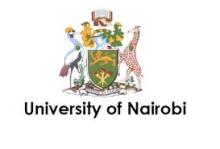Resource information
Establishment of seasonal grazing enclosures has become an important rangeland rehabilitation strategy in semi-arid regions. This study assessed the impact of enclosure age and enclosure management on the vegetation composition in the Njemps Flats range unit, Lake Baringo Basin (Kenya). Six communal enclosures (13–23 years since establishment) and six private enclosures (3–17 years since establishment) were selected. Point-line transect and quadrat-based measurements were made of herbaceous cover, functional group relative abundance and standing crop inside the enclosures and in the adjacent open rangeland. Unpalatable forbs and sedges dominated the herbaceous vegetation of the degraded open rangeland. Informal semi-private land ownership reduced open rangeland degradation as shown by a higher cover of surviving annual grasses. Rangeland enclosure fostered regeneration of annual and perennial grasses, and significantly increased grass cover and standing crop. Private and communal enclosure management were equally successful in rehabilitating grass cover. Standing crop in the communal enclosures was fully recovered, but it was sub-optimal in all private enclosures reflecting recent grazing or grass cutting activities. The variability in rehabilitation success highlights the high potential of individual herders’ incentives to promote rangeland rehabilitation but also stresses the importance of more detailed characterisation and monitoring of the enclosure management decisions.


